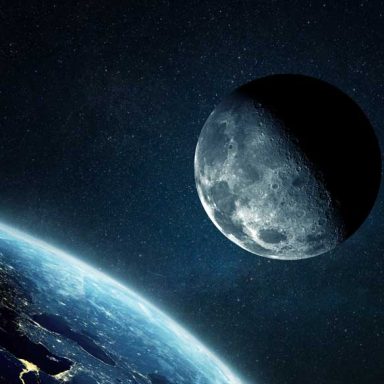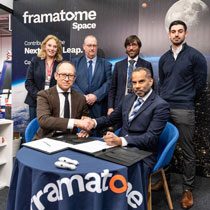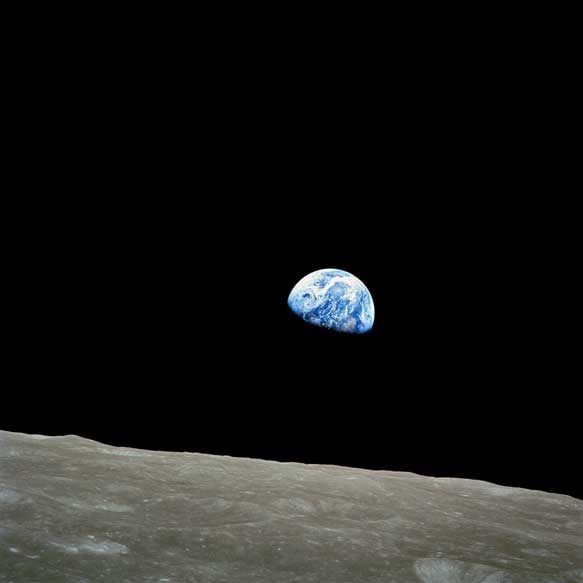Framatome Space: contributing to the next giant leap

Our nuclear and industrial expertise at the service of the space industry
A new age of space travel
Just like nuclear power, the space industry is enjoying renewed interest across the globe and mankind is set to embark on a new age of space travel. NASA has laid out its Moon to Mars objectives targeting a long-term human presence on the moon by 2030 and a first human mission to Mars by 2040. Europe, through its European Space Agency (ESA), has historically participated in NASA’s ARTEMIS program and is now also aiming for increased sovereignty and the development of human launch capabilities. Space tourism or commercial use of space capacities has also grown rapidly in recent years, driven by private companies giving commercial access to space at acceptable prices and making the dream of space travel a reality for a select few.
Many of us do not realize it but nuclear-based technologies have long played a significant role in missions to space. The first nuclear-powered space mission, Transit IV-A mission was launched on June 29, 1961, and the Apollo 12 mission carried a nuclear generator to the moon in 1969. Rovers on Mars run on radioisotope power systems which generate electricity from the natural decay of radioisotopes and radioisotopes also provide the power for many deep space probes.

Video: Framatome has created Framatome Space
Future space exploration can be enabled or enhanced by nuclear power. Nuclear propulsion can offer higher speeds and greater efficiency. It would significantly reduce the time needed to reach Mars for example, and, in so doing, reduce exposure times to intense space radiation. Nuclear power could also provide electricity enabling the development of a suitable environment for a sustained human presence on the Moon.
With the equivalent of 14 Earth-days of darkness each lunar night and temperatures of -130°C on the lunar surface, nuclear power will also give us the means to stay for extended periods in space by providing a a safe, reliable long-lasting source of energy.
65 years of nuclear and industrial expertise at the service of the space industry
At the dawn of this new age of space travel, Framatome has created Framatome Space, putting 65 years of nuclear and industrial expertise at the service of the space industry.
For 65 years, our teams have designed, built, and serviced the nuclear steam supply system of nuclear plants across the globe. We have been present at every stage of the process on all types of reactor technologies. Framatome is also involved in the future of nuclear power generation from third generation reactors to advanced reactors and Small Modular Reactors (SMRs).
News

Framatome and Perpetual Atomics Sign Agreement to Advance Industrialisation of Radioisotope Power Systems for Space Exploration

With the creation of Framatome Space, Framatome stands ready to play a decisive role in the future of space exploration. We firmly believe that nuclear is a game changer to provide the amount of energy needed by any development.
Grégoire Lambert, Vice President, Strategy at Framatome and Framatome Space
Selected solutions for the space industry
Framatome Space may a new brand, but Framatome is not completely new to the space industry!
Framatome is supporting the CEA and Ariane Group with a feasibility study on a nuclear-thermal propulsion engine. It involves heating liquid hydrogen by passing it through a nuclear reactor core to transform it into gas at a high temperature, before ejecting it to generate thrust. This would have two to three times greater efficiency than a conventional chemical engine and could halve time needed to travel to Mars from six to three months.
Framatome and Ultra Safe Nuclear Corporation (USNC) announced in January 2023, their intent to form a joint venture to manufacture commercial quantities of Tri-structural Isotropic (TRISO) particles and Ultra Safe Nuclear’s proprietary Fully Ceramic Micro-encapsulated (FCM®) fuel.
Beyond our core business, Framatome also provides metals, chlorides, and oxides for non-nuclear markets. At our plant in Jarrie France, we convert zirconium ore into nuclear industrial products. Hafnium, for example, is a by-product of nuclear grade zirconium production and is widely used as an alloy in high-tech applications to boost advanced mechanical performances especially at high temperatures. Niobium-hafnium alloy is commonly used in the aerospace industry. Tantalum-tungsten alloy containing hafnium has a high creep strength and can be used as a protection layer material for spacecraft.
Our CERCA division is the world’s leading supplier of uranium fuel and targets for research reactors, and our Isogen joint-venture specializes in producing radioisotopes in commercial CANDU power reactors.

Did you know?
- Framatome supplies Hafnium for the hardened alloys of spacecraft
- Framatome manufactures domes for the tanks of launchers
- 1 lunar night = 14 Earth days!
- Nuclear thermal propulsion is twice as fast as a chemical rocket
- Temperature on the moon: up to 130°C during lunar daytime and -130°C at night